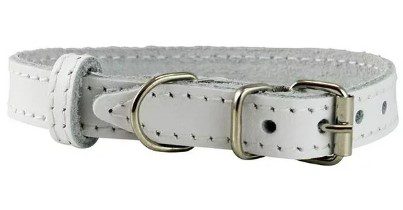

Collar allergy is a type of contact dermatitis that is caused by prolonged contact with a dog’s collar. Common symptoms include red, inflamed skin, itchiness, and irritation near the site of contact with the collar. Other signs may include hair loss, scabbing, or oozing, and in severe cases, infection or scarring.
Collar allergy is a type of contact dermatitis caused by the dog’s prolonged contact with materials that may be found in dog collars, such as metal, plastic, rubber, or dyes. Allergy-causing substances can build up on the collar and irritate the skin, leading to inflammation, itchiness, and other symptoms. In some cases, an allergic reaction can occur even if the dog has not worn the collar recently.
The diagnosis of collar allergy in dogs involves ruling out other causes of skin irritation such as a flea allergy or hot spots, and then obtaining evidence of contact dermatitis from the dog’s collar. This usually involves getting a skin sample from the affected area and testing it for signs of an allergic response. Other tests may also include blood tests or allergy tests to identify potential allergens in the area.
Collar allergy can be a serious condition if left untreated, and the mortality rate is quite low. However, it can cause significant discomfort and can interfere with daily activities. If treated promptly and appropriately, the symptoms should be relieved and mortality rates should remain low.
Treatment of collar allergy in dogs typically involves avoiding contact with the allergen if possible. This may be done by replacing the collar with a hypoallergenic option, or by using a collar cover to protect the skin from irritation. Anti-inflammatory medications and corticosteroids may also be prescribed to reduce inflammation and itching. To reduce risk of infection, and to soothe the affected area, a topical ointment or shampoo may be used as directed by the veterinarian.
To prevent collar allergy in dogs, it is important to regularly inspect and clean the collar, as dirt and debris can build up and cause irritation. It is also important to periodically switch to a collar made of different material, such as leather or neoprene, to prevent skin sensitization. If a reaction is observed, it is important to have the area examined and treated by a veterinarian to prevent secondary infection or scarring.
Collar allergy is not contagious and cannot be spread to humans. However, if you have a contact allergy to a material in the collar, it could cause an allergic reaction in humans who come into contact with the material.
Home remedies that can be useful in managing collar allergy include regularly cleaning and airing out the collar, using a collar made of hypoallergenic materials, and removing the collar if any signs of irritation appear. Also, it may be beneficial to switch to using a harness instead of a collar.
While these home remedies for collar allergy may be helpful, it’s important to keep in mind that they are not a guaranteed solution. Always consult with a veterinarian to get the best advice and care for your pet’s situation.
Several dog breeds are known to be particularly susceptible to collar allergies. These include Chinese Shar-Pei, Old English Sheepdog, Bulldog, Boxer, and other squashed-faced breeds due to thealtered shape of their heads. Other breeds, such as Yorkshire Terriers, Poodles, and Portuguese Water Dogs, can also be prone to collar allergies. Symptoms of a collar allergy may include itching, redness, and rashes either around the neck, in the ears, or near the face.
Have you ever experienced this type of allergy in your dog? If so, how did you respond? How did you feel? How did you manage the process? Allergy-prone pets require extra attention and care to ensure their safety and well-being. We wish you and your four-legged friend the best of luck as you learn to manage the allergies, and may your bond stay strong no matter what.